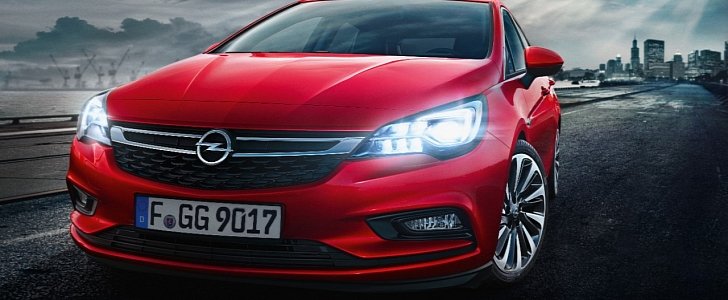Apparently, Volvo isn't the only company that cares about cars crashing into wild animals. Although Opel has yet to develop an anti-kangaroo system, the German automaker believes its new headlight system called IntelliLux LED Matrix decreases the likelihood of hurting the local fauna and yourself.
The Russelsheim company quotes statistics from the local Hunting Association that show car collisions with a deer, a stag or a wild boar occur once every 2.5 minutes in Germany. Because animals become hungry in winter due to the scarcity of food, accidents occur more frequently.
Darkness is also a large contributing factor. So, obviously, drivers who can see better at night have a higher chance of braking to avoid the impact. Unlike high-end LED headlights from BMW or Mercedes-Benz that flick the beams onto potential dangers, Opel's system only does the basic high-beam dimming trick so as not to blind other cars. But even that could prove very useful.
Right now, the IntelliLux LED system is only available on the Astra, but it might arrive on the Mokka in 2016. At €850, it's cheaper than most of the systems from competitor companies.
“We are democratizing technology by making innovations affordable and bringing them to high volume vehicles. Our new LED matrix light, IntelliLux, is a perfect example. With the introduction of this lighting technology to the Compact Vehicle Class, Opel is the first automaker to offer this highly efficient and high-performance lighting system in this segment. Our integration of the LED Technology provides outstanding night time performance enhancing safety for the driver and those around them,” says Charlie Klein, Vice President Vehicle Engineering at Opel.
Does the system really make a difference? We'll let you be the judge after giving you the numbers. At speeds of 80 km/h, drivers with the full LED matrix systems see objects 30 to 40 meters further than normal, giving them an extra 1.5 seconds to react. That's not enough time to stop the car fully, but the slower the speed is, the less dangerous a crash becomes.
At 60 kilometers per hour, the force exerted by hitting a wild boar is equivalent to 3.5 tons, so it's like having a rhinoceros sitting on your car. Equally, a male deer is equivalent to 5 tons or the weight of an elephant.
Darkness is also a large contributing factor. So, obviously, drivers who can see better at night have a higher chance of braking to avoid the impact. Unlike high-end LED headlights from BMW or Mercedes-Benz that flick the beams onto potential dangers, Opel's system only does the basic high-beam dimming trick so as not to blind other cars. But even that could prove very useful.
Right now, the IntelliLux LED system is only available on the Astra, but it might arrive on the Mokka in 2016. At €850, it's cheaper than most of the systems from competitor companies.
“We are democratizing technology by making innovations affordable and bringing them to high volume vehicles. Our new LED matrix light, IntelliLux, is a perfect example. With the introduction of this lighting technology to the Compact Vehicle Class, Opel is the first automaker to offer this highly efficient and high-performance lighting system in this segment. Our integration of the LED Technology provides outstanding night time performance enhancing safety for the driver and those around them,” says Charlie Klein, Vice President Vehicle Engineering at Opel.
Does the system really make a difference? We'll let you be the judge after giving you the numbers. At speeds of 80 km/h, drivers with the full LED matrix systems see objects 30 to 40 meters further than normal, giving them an extra 1.5 seconds to react. That's not enough time to stop the car fully, but the slower the speed is, the less dangerous a crash becomes.
At 60 kilometers per hour, the force exerted by hitting a wild boar is equivalent to 3.5 tons, so it's like having a rhinoceros sitting on your car. Equally, a male deer is equivalent to 5 tons or the weight of an elephant.





